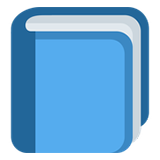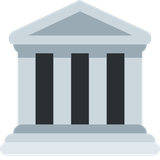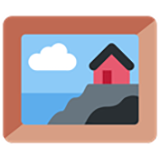Best Practices for Promoting Digital Publications
The following working checklist provides ideas on how to promote your museum’s digital publications and make scholarly and general audiences aware of these valuable resources.
We are looking for other successful strategies to include on this list. To suggest an approach that has worked for you, please contact the MuPuDIG team (mupudigital@gmail.com).
Institutional Website
- Create a listing for the publication on the department’s page of the museum website. Announce the publication on the main museum website.
- Link to the publication from other relevant portions of the site, such as related exhibition pages and in relevant parts of the collections search.
Marketing and PR
-
Send announcement of publication to target audiences (e.g., museum and curatorial community, universities, libraries, publishers, tech community, relevant reviewers/publications, museum members/donors/other interested groups) with assistance from marketing department or others, as needed. In addition to addressing the topic, scope, and content of the publication, the announcement should highlight the features unique to it (such as accessibility, hi-res images, viewing tools, digitized primary source materials, etc.).
- Assemble a spreadsheet of target contacts by leveraging contributors’ connections.
- See a sample release here.
- Draft social media posts to post with accompanying images (such as the “cover” image of the publication).
- Request that author(s) provide a link (and potentially a PDF) on any personal or institutional websites (particularly those ending in .edu, which should help in having the publication picked up by Google Scholar, or other sites such as ResearchGate or Academia.edu) and social media platforms.
Onsite Promotion
- Discuss with curators and others the possibility of promoting the publication within the galleries (e.g., URLs on relevant gallery texts or labels, creation of materials like brochures or bookmarks with information and URL).
- See sample bookmark copy here.
Library and Online Cataloging and Indexing
- Create, or have museum library create, a WorldCat/Connexion record and add the publication to the museum library’s catalog.
- Draft an email with the publication catalog data that librarians can send to their connections at ALA and ACRL, as well as any connections at local libraries (university, museum, public), asking them to add the record to their catalogs.
- Contact large international museum libraries and the like (such as Getty) and ask them to add the record to their catalogs.
- Consider becoming a partner with Google Books and making publication available there.
- Consider listing a PDF of the publication on JSTOR Books. (There is a fee associated with this; JSTOR provides monthly analytics.)
- The above steps should ensure that the publication is indexed on Google Scholar, but it should be verified that this happens.
Cross-Promotion
- Provide information and URL to organizations with relevant areas of focus and inquire whether publication can be added as a resource on websites or otherwise announced to members (e.g., if the publication relates to conservation practices, contact Getty’s Abstracts of International Conservation Literature, ICCROM, and the like; for a publication on Netherlandish art, ask to be included in the list of resources on the website for the Historians of Netherlandish Art, or see if CODART will help with promotion).
- Provide information to more generalized organizations and sites that might be willing to list the publication or otherwise help with promotion (e.g., Smarthistory, links on relevant entries on the Met’s Heilbrunn Timeline of Art History, the Online Books Page).
-
Add links on Wikipedia to relevant entries and essays in the digital publication.
- Search for Wikipedia pages on relevant topics (e.g., artists, movements, specific artworks, lists of works by artists, other historical people or moments).
- To edit on Wikipedia, set up a personal login (using a personal login and email account rather than an institutional account). All edits are visible to the Wikipedia editing community and could be flagged/blocked if thought that the institution could be profiting from them. If this happens, it could be explained that the publications are free and the museum is a nonprofit, but it is likely easier to avoid getting flagged in the first place. Limit the number of edits made per week and use a personal account to avoid getting blocked.
-
To add a link to the publication quickly and easily, navigate to the page you’d like to edit and click Edit.
- To add under External Links or Further Reading, add a bullet point under either heading and provide citation information, including a link to the full publication and to a specific page (e.g., Joseph J. Rishel, “Barbaro after the Hunt by Marie-Rosalie Bonheur (W1900-1-2),” in The John G. Johnson Collection: A History and Selected Works, a Philadelphia Museum of Art free digital publication). Then click Publish Changes.
- To add under References or Notes, find a place for the footnote to go within the text, then select Cite. Fill in the pop-up box with citation information and click Publish Changes.
- Prioritize adding links to pages that are the most relevant for your publication, followed by pages that are most likely to be viewed on Wikipedia (such as those for very well-known artists).
- Attend, set up a booth, or lead a panel or presentation at relevant conferences to connect with scholars and other institutions (e.g., CAA, AAM).
- Announce publication to the MuPuDIG community on Slack. Add to the MuPuDIG list of digital-first museum publications.
Analytics
- Keep a log noting the date above activities take place for comparison to analytics.
- Regularly review Google, JSTOR, and any other available analytics to look for patterns in visitation.
- Review where publication has been cited, if possible (this information can be found through some sites that include the publication, such as Google Scholar and Crossref).
- Use analytics to assist with planning of future digital publications and their promotion.
Originally compiled by Katie Brennan, Philadelphia Museum of Art, 2018




